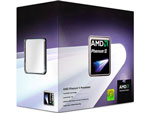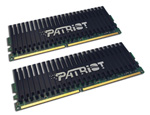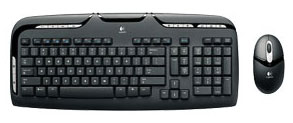AMD HTPC
Everyone asks for HTPC component recommendations, but those potential HTPC buyers seem almost impossible to please. Perhaps this is because the HTPC, more than any other computer class, is a very personal machine. It needs to meet the specific needs and demands of the end users, who vary widely in what they plan to do with their new HTPC.
So let's first talk about our build concept for these two HTPC configurations, which remain very similar to the recommendations in our last entry guide. We are assuming the user already has the HDTV or monitor he plans to feed, along with a sound system for that HDTV. The motherboards we recommend can reasonably feed audio signals for your Blu-ray movies, but they are not integrated audio amplifiers. Since most end-users are on cable or satellite for TV, we will not include any TV tuner recommendations. In other words, our HTPC recommendation is a "white box" recommendation. We do understand that some users want more detail and more options in our HTPC recommendations so we plan to do an expanded HTPC Buyers' Guide in the future.
Of the many possible uses for an HTPC, the majority of end-users store, play, and stream movies with their HTPCs. Thus, that is where we have concentrated our recommendations. In general, the processing power in both systems has increased since our December 2008 guide, but as performance increases costs have fortunately continued to drop. This is particularly true in our new case recommendation from Antec, which provides a "component look" case and silent 80 Plus certified 380W power supply for $120.
| AMD HTPC System | ||
| Hardware | Component | Price |
| Processor | AMD Phenom II X3 710 Deneb (Tri-core 2.6GHz, 45nm, 3x512KB L2, 6MB Shared L3) |
$119 |
| Cooling | CPU Retail HSF | - |
| Video | On-Board | - |
| Motherboard | ASUS M3N78-EM GF8300 Micro ATX | $90 |
| Memory | Patriot Viper Model PVS24G6400LLK 4GB DDR2-800 4-4-4 ($52 less $25 Rebate) |
$27 |
| Hard Drive | WD Caviar Green WD10EACS 1TB 32MB cache - OEM | $90 |
| Optical Drive | LG BD/HD DVD / 16x DVD+/- RW GGC-H20L - Retail | $110 |
| Audio | On-Board | - |
| Case | Antec NSK2480 Black/Silver Micro ATX Case Includes 80 Plus Certified 380W PSU |
$120 |
| Power Supply | Earthwatts 380W Included with Case | - |
| Base System Total | $555 | |
| Input | Logitech Cordless Desktop EX110 USB RF Wireless Keyboard and Optical Mouse |
$30 |
| Operating System | Microsoft Vista Home Premium SP1 (for System Builders) | $99 |
| Complete System Bottom Line | $685 | |
 |
The CPU chosen for the AMD HTPC is the tri-core Phenom II X3 710 with 6MB of shared L3 cache. You get the expanded processing power of the Phenom II, which is always useful in an HTPC, at the same price as the older Phenom CPU chosen in the last HTPC guide. The three cores each run at 2.6GHz, each has a 512KB L2 cache, and you get a shared 6MB L3 cache - the same L3 cache size shared on higher end quad-core Phenom II processors. We hesitate to call a Phenom II X3 CPU a low-end chip, but this is certainly the most reasonable Phenom II you can buy. However, it has plenty of power to take your AMD HTPC anywhere you choose to go.
 |
With DDR2-800 still a reasonable option these days, we equipped the HTPC with 4GB of fast CAS4 Patriot Viper memory. We aren't interested in overclocking this HTPC (though it's technically still possible), and spending additional money on even higher performance RAM just doesn't make sense. 4GB of memory, however, does make perfect sense in an HTPC box.
 |
The $90 ASUS M3N78-EM is based on the NVIDIA GeForce 8300 chipset. The board features one PCI-E x16 slot, one PCI-E x1 slot, two PCI slots, 8GB memory support, NVIDIA Gigabit LAN, 7.1 HD audio, 12 USB ports, five 3Gb/s SATA ports with RAID support, IEEE 1394a, one eSATA port, HDMI/DVI/VGA output, and full support for Phenom 140W processors. This board offers overclocking capabilities along with being a top-notch HTPC board. We highly recommend the GF8200/8300 series for the HTPC market due to hardware accelerated Blu-ray playback, multi-channel LPCM output, and very good application performance.
 |
As we discussed in the HTPC introduction we did not include a TV tuner in the configuration since most end users are now distributing their cable and satellite feeds. Few users, therefore, have any real need for a TV tuner card. If you truly need a Digital TV tuner, one interesting option on the TV tuner side is the HD HomeRun from Silicondust USA. This dual HDTV tuner/recorder functions over a network and provides ATSC/QAM support. The price of $159 is more than many other options, but this is arguably a more flexible overall solution - particularly with the mandated move to digital from analog.
What's the point of having an HTPC if you don't have a lot of storage space? To that end, we selected a newly affordable 1TB (1000GB) Western Digital Caviar Green WD10EACS SATA hard drive at just $90. The WD Green features an energy saving design and we found to be among the quietest drives we have ever evaluated. For an HTPC, silence is paramount, and this WD Green will not disappoint. The WD Green is a bit slower than 7200RPM 1TB drives, but the real performance difference is very minor - especially if you're only interested in HTPC duties like video storage and playback.
Seagate also makes a super-reliable 1TB drive optimized for video storage and retrieval called the Seagate SV35.3 ST31000340SV 1TB at $150. This "video" Seagate features 24x7 reliability with >1 million hours MTBF and improved read/write reliability. For those willing to pay the small premium for this drive, the "video" Seagate would be a good choice. The Seagate includes a 5-year warranty.
 |
The Optical Drive is certainly an upgrade to the entry and budget systems since a reasonable HTPC requires Blu-ray playback capabilities. The LG Blu-ray drive fits the bill without breaking the bank. It provides 6X Blu-ray playback and the fastest recording and playback of DVD and CD media. The current price is around $110, but this drive sometimes goes on sale for $100 so look out for specials.
There are also Blu-ray options from Lite-On for less than $100 and a 6X Blu-ray player at $105. We do not have much experience with this Lite-On drive, but Lite-On drives in the past have proved reliable. That would make the Lite-On 6X Blu-ray a more reasonably priced alternative where every penny counts.
 |
Our choice for the HTPC case is the Antec New Solution NSK2480 with its audio component look, and it includes an extremely flexible design for a micro ATX motherboard. The case features an Earthwatts 80 Plus 380W power supply and two side-mounted 120mm TriCool 3-speed fans. It supports two front-accessible 5.25" drives and two internal 3.5" drives. An adjustable internal baffle system lets you direct the airflow for best cooling.
If you prefer a small cube case, the Lian Li PC-V350B is a gem of a small black aluminum case. The Lian Li is also a great choice for those who prefer a cube instead of a component look.
 |
Since most will place their HTPC near their HDTV or big screen monitor, a wired keyboard and mouse are not very useful in most setups. More often, you'll want to control the PC from across the room, so we selected a wireless RF Logitech keyboard and mouse. At just $30 for the pair, the Logitech Cordless Desktop EX110 USB RF wireless package is a great value. This is also the HTPC preferred RF wireless set, which does not require "line of sight" that is needed for IR wireless.
The final price of the AMD HTPC comes to just $685. That is a bargain considering the tri-core Phenom II CPU, 4GB of memory, and 1TB hard drive, all housed in a quiet Antec HTPC case with an 80 Plus certified PSU. You can certainly spend even less on a basic HTPC box, but we doubt you can build a more powerful or quieter system for the same money.










65 Comments
View All Comments
strikeback03 - Thursday, May 14, 2009 - link
So it's pretty much a different keyboard with a touchpad for more money? I suppose they could have recommended a DiNovo mini as well, I'd imagine the input devices used are definitely part of the "personal touch" mentioned for the HTPCs.aftlizard - Thursday, May 14, 2009 - link
59.99 would still keep them under there stated budget and 90 dollars less than the Dinovo keyboard while taking up less space, using less batteries and providing better range than RF.GeorgeH - Thursday, May 14, 2009 - link
"The WD Green is a variable speed energy saving design"Unless I'm very much mistaken, that WD drive does not vary its rotation speed. Their original "5400-7200" RPM claims were purely a marketing thing, a shorthand way of saying "5400RPM power consumption with 7200RPM performance". WD no longer bothers to claim their drives vary in speed, instead merely listing it as "IntelliPower" and nothing more.
Saying it's variable speed is good marketing for people who don't see anything beyond RPM, but as AnandTech isn't on WD's payroll it seems a little out of place here. ;)
Spoelie - Friday, May 15, 2009 - link
What intellipower means is that the caviar green line is engineered to meet a power target, not a (rotational) speed target. They guarantee that the speed is at least 5400rpm tho.If the power budget is 7w, and the current design allows this by spinning the disks at 5800rpm, then that is what you get. The next design revision could bump up the speed to 6100rpm while keeping the same power budget (for example, optically shrunk controller chips, or increased density platters -> less platters needed for the same capacity -- both save power which can be spent increasing rotational speed). That's why you have the caviar green EACS, EADS, ...
coda6 - Thursday, May 14, 2009 - link
I agree, I would love to see an article on Anands HTPC set up, or at least a discussion on the possibilities of the current HTPC tech.goinginstyle - Thursday, May 14, 2009 - link
Back to the HTPC stuff, on page 6, your recommendation is ASUS but the pic is a Gigabyte board from the looks of it.Gary Key - Thursday, May 14, 2009 - link
Fixed.... :)goinginstyle - Thursday, May 14, 2009 - link
I think the .05% of people who will run VT with an entry level system sporting Win7 with XP mode are making much to do about nothing in this case. Yes, VT support is important for certain sectors but this in an entry level guide for the masses, most of whom have no idea what VT support even means and could care less if they did.Anyway, it actually appears some thought went into this guide compared to the previous $800 guide. So good job to the editors who actually did some work instead of mailing in their choices this time.
I would rather see a separate HTPC guide explore choices from the ION up to the i7 and include CableCard, Tuners, NAS, and other components built around a true HTPC.
piesquared - Thursday, May 14, 2009 - link
There is no better choice for an HTPC motherboard than MSI's Maui board on an AMD platform. And DDR2 is still cheaper than DDR3. That would be my recommendaton anyway.Also agree with the above poster regarding Intel's lack of virtualization support.
arklab - Thursday, May 14, 2009 - link
Wow!This time you guys really blew it on the Intel CPU choices, and could be giving novices who might rely on your advice a nasty surprise.
None of the selected Intel CPUs support XT-x - which of course is REQUIRED to run the new virtual XP mode in Windows 7.
Worst of all, you don't even warn the reader of this situation.
The AMD CPUs are all OK, of course.
Please change your recommendations to select "full use" CPUs.